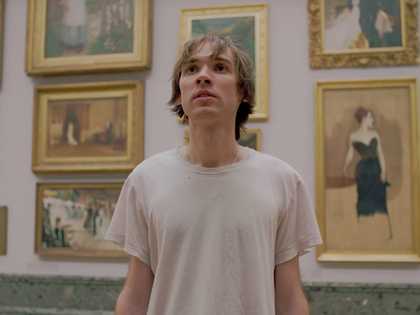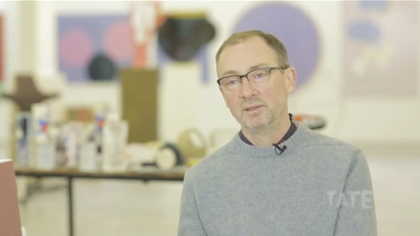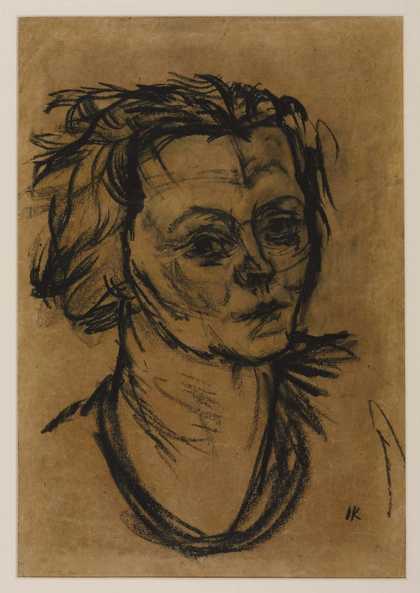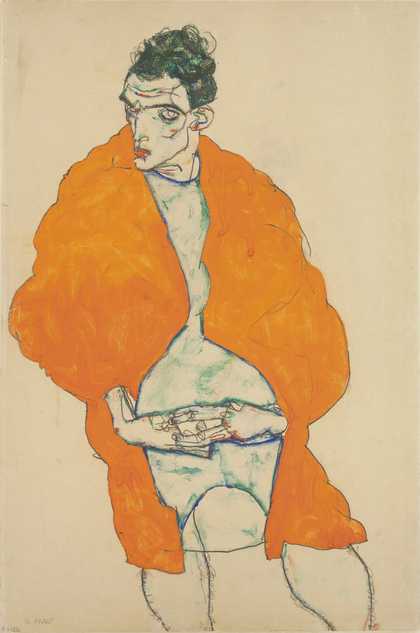In 2008, an exhibition at Tate Liverpool, Gustav Klimt: Painting, Design and Modern Life in Vienna 1900 told the story of the intellectual and cultural ambitions of Gustav Klimt and a number of his close contemporaries who, together, formed a radical cultural group called the Viennese Secession.
As well as paintings by Gustav Klimt and others, the exhibition featured work by architects, furniture and fashion designers who shared a common artistic vision. Art critic Nick Hackworth went to look around.
I’m Nick Hackworth and we’re here at Tate Liverpool to see Gustav Klimt Painting, Design and Modern Life in Vienna in 1900. But as the title of the exhibition indicates this is about more than just Klimt’s paintings. Instead, this exhibition tells a story of the intellectual and cultural ambitions of Gustav Klimt and a number of his close contemporaries who, together, formed a radical cultural group called the Secession. And this included not only painters but sculptors, architects and designers who, together, formed a quintessentially modernist vision of artistic life in the 20th Century. So we’re here in the first room of the exhibition about to see one of the highlights of the show. The piece that surrounds us is a large frieze and it’s a recreation of a frieze that Klimt painted for an exhibition in 1902 at the Secession which was this building created by the radical group that he was the president of. What’s particularly important about it is that it’s an incarnation of the idea of the Gesamtkunstwerk. The Gesamtkunstwerk in German basically means a total work of art. This specific piece that we’re about to walk round is really a homage to Beethoven and also Wagner’s interpretation of Beethoven, and also Wagner’s idea of what the perfect work of art can be. And the first images, the first real content we come across in this very large frieze is this figure of these three humans here who basically represent us, normal humanity, suffering humanity. And this golden knight, although he has a military aspect, is essentially the image of the artist or the composer, the creative really as a romantic hero who can save humanity. And here, spread before us, are personifications of all of the enemies of humanity, and in the centre is a figure from the Greek classical past, a demon called Typhon. To Typhon’s right are his three devilish daughters, the Gorgons, and then above them personifications of the three real enemies of humanity, we have sickness, madness and death. And so then moving away from the darkness we come to the final third of the frieze. We find this beautiful figure of the poet and she’s carrying a lyre, and then we come across this blankness finally to the dénouement of the entire piece which is Wagner’s vision of art as the only place where you can experience pure happiness, pure joy and pure love. There’s a choir of angelic angels here singing. And finally this couple in beautiful, beautiful embrace. And so we’re upstairs in the main part of the exhibition and, as you can see, this room is full of furniture of architectural models, of household objects, household furniture, and even some fashion designs, and that will probably surprise people who know Klimt only by reputation or by his famous paintings like The Kiss. As we saw downstairs, Klimt and his followers were interested in this idea of the total work of art and in aestheticising everything around them, and they wanted perfection in terms of an aesthetic environment you could walk in to where everything had been designed by an artist craftsman, and so here we see the products of that search for this total aesthetic unity. And then we have this painting here which itself is not one of the most iconic Klimt paintings but it’s interesting because it’s very personal and it’s kind of a rebuttal to lots of the criticism he came under. Nuda Veritas means the naked truth and here we have the female form of naked truth. But what’s really fascinating is the quote at the top from Schiller: “If thou canst not please all men by thine actions and by thine art, then please the few; it is bad to please the many”. Well, I think the main reason that Klimt is still fascinating is because of the quality of his painting. The reason he’s still popular is because his paintings are beautiful and credible; they stand alone basically in terms of their quality and I think amongst all his contemporaries he was clearly the most exciting painter and he also painted the most beautiful works. As a strange concluding point we can look at this card table which was designed for Karl Wittgenstein, father of the famous philosopher. Now, his family along with a few others were the major patrons of the Viennese Secession and they enabled, for a brief period of time, Klimt and his contemporaries to create this ideal environment where everything from card tables to coal scuttles to seats to paintings would be part of a beautiful aesthetic whole, but sadly that world came to an end. 1914 brought the First World War and economic ruin to many families, and the Viennese Secession limped on till 1932 when the great depression finally made it history.





